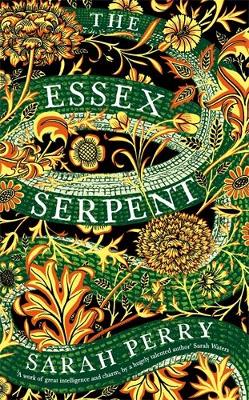Reviewed by Heather on
Cora is not a typical Victorian widow. It is implied that her husband was abusive and she certainly is not grieving him. She decides to go with her companion Martha and her young son Francis to Essex because she wants to follow in the footsteps of female amateur naturalists. Hearing rumors of a monster in the estuary thrills her to no end. Her friends urge her to contact the local vicar. She has no interest in that. She doesn't want to be stuck in company with a stuffy vicar. The vicar and his wife don't have any interest in her either. They assume she is an elderly lady with a wastrel son but they invite her to dinner to be nice.
This book covers a lot of issues in England at this time. Martha is a socialist who is campaigning for safe housing for the poor in London. At this time to get into good housing you had to prove that you were of good morals. This offends her because the landlords could go out drinking and being irresponsible but the tenets would be evicted if they acted like that. She convinces a young doctor with family money to spare to join in her the cause.
Francis would now be recognized as autistic but in this book he is just seen as a bit odd. He's mostly left to his own devices because Cora doesn't know how to interact with him.
Cora has an admirer in Luke Garret, the doctor who treated her husband. He wants to do more and more daring operations and is fighting the medical establishment.
The Ransomes, the family of the vicar, get involved with Cora and her entourage. Will Ransome is the vicar who is interested in science. He knows that rumors of a serpent killing people and livestock are just superstition but he can't get his parishioners to listen to reason. This talk is tearing his small village apart and then Cora appears and runs roughshod over the town. It is hard to tell what is more damaging - the rumors or the visitor.
The writing is lyrical and mystical. It evokes foggy mornings and salt water breezes. Of course because this is historical fiction and not urban fantasy, there is no magical creature in the river. Seeing how the author resolves all these plot lines and logically explains the serpent is part of the drama.
This is a relatively slow read. It takes time for the writing to sink in. The plot jumps around often so it can be a bit tricky to keep track of who is where at what time. You don't always know why you should be interested in characters until they start to tie into the larger narrative.
This book is good for people looking to lose themselves in the writing of a slow paced glimpse of life in rural Victorian England with a hint of mystery mixed in.This review was originally posted on Based On A True Story
Reading updates
- Started reading
- 17 July, 2017: Finished reading
- 17 July, 2017: Reviewed
